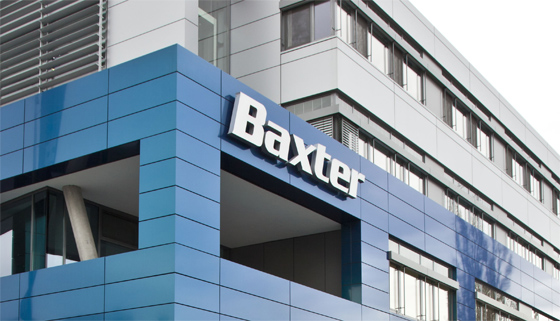by BMO Global Asset Management
After years of declarations that the bull market in bonds is over and the rise in interest rates was imminent, are we finally there? The move in rates on 10 year Treasuries again prompted this question in the first quarter; rates rose by over 50 basis points during the quarter, before settling in to a more modest 30 basis point increase.
If we are, in fact, at the end of the bull market, what does the new horizon look like? Unlike, we suspect, how equity managers would react to the “end of the bull market”, we welcome such developments, even if we retain some of our skepticism.
Welcoming a bear market?
Why might a bond manager be pleased with higher rates, given that an increase in rates means a decline in bond prices?
In examining the history of returns in fixed income during what has been termed a thirty year bull market, several points emerge which complicate the accepted narrative. It is completely accurate to observe that rates have fallen precipitously from the early 1980s; 10 year Treasuries peaked at 15.84% in September 1981 and ended the first quarter of 2018 at 2.74%. This decline in rates contributed a seemingly impressive 60% to the total return of bonds during that time. However, during the same time, coupons contributed over 1,500%, dwarfing the impact of price return. So, while it is accurate to refer to the period as a bull market, the price return is nearly immaterial to overall returns.
 While the lion’s share of the positive returns were driven by coupons, even the consistency of that decline in rates feels overstated in popular literature. Starting from that peak period, yields have actually increased in 14 of the 37 years, or 45% of years.
While the lion’s share of the positive returns were driven by coupons, even the consistency of that decline in rates feels overstated in popular literature. Starting from that peak period, yields have actually increased in 14 of the 37 years, or 45% of years.
The fear associated with yield increases is somewhat overstated, both due to the surprising frequency of yield increases as well as the relative paucity of actual negative return years for fixed income broadly, with only three such incidents (1994, 1999 and 2013) since 1981.
Were bonds to experience a 30 year bear market with rates rising similarly to how they fell, the approximately 30 basis points per year as an increase could still result in positive returns at the outset, before becoming downright irrelevant in later years. With yields for the Bloomberg Barclays Aggregate at the end of March at approximately 3.1%, a 30 basis point increase in yields would erode about half a year’s return, but as rates move higher, the impact would lessen each year as yields, the predominant driver of returns, increase. While any individual bond would likely be hurt by rates rising, reinvestment in higher coupon bonds at the portfolio level should outweigh that negative impact. The chart below illustrates projected returns, assuming that 30 basis points a year of increase in yields and a constant 5 year duration as simplifying assumptions.
So, as peculiar as it might sound, we would welcome a 30-year bear market in bonds; though in all actuality we and many others would be less sanguine about the actual factors, which would drive such a bear market (1970’s inflation is not terribly appealing).

I’m shocked, shocked to find that rates are going up in here
A moderate and consistent increase in rates suggests increasingly attractive total returns, but what of a rate shock? We do not discount the negative short-term impact of such an event though still believing the longer-term effect would be positive for the asset class.
A rapid increase in rates should, as it did in the first quarter, result in negative returns for the asset class. However, the first quarter provides an additional interesting illustration of the impact of an increase in interest rates: the impact is not confined to fixed income. In fact, even though the causation is more direct, fixed income (as measured by the Bloomberg Barclays Aggregate) only experienced a peak to trough decline of about 2.5%, while the S&P 500 fell by over 10% in February.
So while we believe a rate shock is a risk that needs to be considered, we suspect some of the fears for fixed income are misplaced. A rate shock, whether caused by fundamentals (e.g. inflation expectations) or a perceived monetary policy misstep, seems likely to have broader and potentially a more severe impact to other asset classes.
Idée fixe in fixed income
While many have long projected an increase in rates, harkening back to an earlier time, few expect rates to hit early 1980s levels. Mean-reversion, though, may mean something materially different than many may store in their memories. For the trailing ten years, effectively the post-financial crisis era, the average 10-year Treasury yield has been about 2.5%. This trailing 10-year figure has continued to decline as rates have remained low and for the first time in some time. Treasury yields now exceed the 10-year average. If rates were to mean revert, the effect could be the opposite of what many expect with yields falling. The average over a longer period of history continues to remain higher, though not materially so, with a 20-year average for example at 3.67%. Nostalgia to the higher rates of earlier periods misses the vastly different inflation and growth environment of the 1970s and 1980s.

Return targets
As yields have remained low in the post-crisis era, investors’ expectations have shifted to reflect this reality. This shift can be seen in the return targets of public retirement plans, where according to National Association of State Retirement Administrators (NASRA), of plans surveyed “nearly three-fourths have reduced their investment return assumption since fiscal year 2010, resulting in a decline in the average return assumption from 7.91 percent to 7.36 percent.”
For the segment of investors that use market-based interest rates to discount liabilities, an increase in rates is almost invariably positive for funding ratios. An increase in rates should cause liabilities to decline more rapidly than assets. For example, a $1 million liability ten years from now assuming a rate of 2.74% (the ten year Treasury at the end of the first quarter) versus 2.41% (the rate at the end of 2017) declines in present value from $786k to $760k, a decline of about 3.5%. With liabilities instantly shrunk as discounting rates increase, the need to achieve higher returns diminishes on the margin.
On balance, with fixed income able to deliver a higher percentage of these lower targets as rates rise, this increases the appeal of fixed income broadly.
The four elements—other than earth, wind, fire and water
The illustration of generating a target yield within fixed income is particularly important in the context of investors’ return targets and this period of low rates has impacted the role of fixed income in investors’ portfolios. In the context of broad asset allocations, while generally not viewed as a primary driver of returns, fixed income has historically served four distinct purposes: income, diversification, capital preservation and liquidity. As yields dropped post-crisis, these factors have come into odds with one another rather than working in harmony. For example, achieving a 5% yield has gone from a simple task to somewhat more involved. Twenty years ago, the Bloomberg Barclays (Lehman back then) Treasury index yielded above 5%, reflecting that a pool of Treasuries across the maturity spectrum, could generate this target yield. A pool of Treasuries is the very definition of capital preservation and rate exposure has been the historical driver of fixed income’s diversification benefit against equity risk.

Since that time, however, the composition of fixed income assets needed to generate a 5% yield has shifted meaningfully. As Treasury yields declined and Treasuries alone could no longer meet the 5% yield, the next phase was a more core-like mix including mortgage backed securities and credit. This more core-like mix still offered all four elements, though in not as pure a form. As yields continued to decline, more recently Treasuries had to give way to allow high yield debt and other “plus” sectors, culminating in 2017 with a portfolio requiring 70% high yield to generate the yield target. Investor interest appears to have followed this trend of changing assets mix. This is significant as the more recent sector blend offers income, but compromises the diversification, capital preservation and liquidity facets.
Is income safe or risky?

Interestingly, not all income is created equally. Proactively seeking income from the equity side is considered a defensive strategy within the asset equity class, while seeking income from the bond side is a higher risk strategy. In short, equity income strategies are more bond like and bond income strategies are more equity like.
While this relationship is unlikely to shift as rates adjust, the relative appeal of seeking yield in alternative manners may. As income becomes more readily available within fixed income, the need to draw upon higher volatility market segments wanes.

Conclusion — the juice is worth the squeeze
Headlines have declared the end of the bond bull market for years, yet if correct, this ominous warning should be embraced by investors in the fixed income market. Over time, yield, not the change in yield, has driven returns and investors should welcome the prospects of that higher yield.
Higher rates should offer investors the ability to meet their targets with greater ease and lower risk, utilizing a greater proportion of traditional fixed income relative to recent history to achieve their goals. The recent rise in Treasury yields has shown this, pushing benchmark yields to their highest level in eight years. Were Treasury yields to continue their rise and aggregate bond indices to offer yields in the mid to high 3% range, would non-core assets be as relevant? Even absent a further change in rates, which could raise its income component, traditional fixed income continues to offer diversification, liquidity and capital preservation to investors.
At the same time, we have not discovered a secret to abrogate the rules of bond math, as has been seen in the first quarter of 2018 (like the fourth quarter of 2016), short-term higher rates do mean declines in prices. The path is unlikely to be linear and we expect challenges if rates continue to rise. An increase in rates and rate volatility can squeeze investors short-term, as markets grapple with price declines and a new paradigm. A new rate regime could differentially impact bond market sectors and issuers, pressuring some, while rewarding others. Rather than fearing the rate rise, we believe this timeframe represents a “take your medicine” moment for markets, a period to be actively managed, which will ultimately lead to healthier outcomes for investors. So, while we anticipate challenges, a proactive approach can mitigate these short term, while setting up investors for a more attractive
investing landscape in the future.
Or, in the parlance of our times, the juice is worth the squeeze.
Contributors from the U.S. Fixed Income Team
Janelle E. Woodward, CFA, Scott M. Kimball, CFA, Daniela Mardarovici, CFA, Frank J. Reda, CMT, Ronald J. Salinas, CFA, Eduardo J. Simpson, CFA, Adam Phillips
Copyright © BMO Global Asset Management













